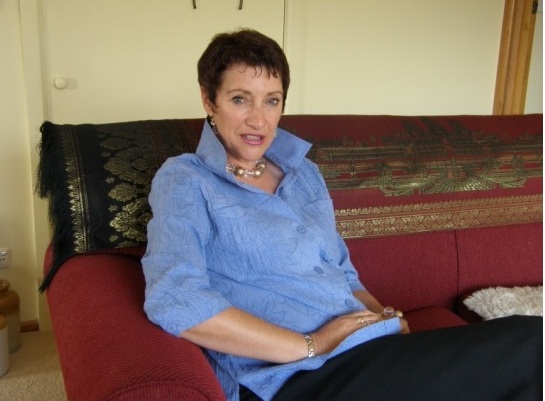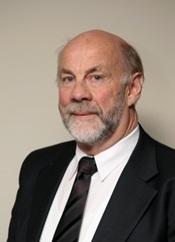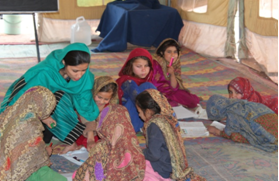A TEACHING ASSESSMENT WITH AN EYE ON STUDENT CENTERED LEARNING METHODOLOGIES
By Peter J. Foley, Ed.D.
Educators continue to wrestle with how we should assess teachers. Nothing definitive is on the horizon. The jury is still out.
I have concluded that if we want to assess how effective a teacher is or is likely to be we must measure :
1. how well the teacher knows their subject matter and
2. how well the teacher uses learning methodologies that are indicative of best practices.
I am concerned in this article with the latter assessment. It is important to note that observation-based teaching assessments, especially standards-based teaching assessments that measure specific dimensions of teaching , significantly relate to student learning outcomes (Rockoff and Speroni) .
Assessments range from elaborate to simple. In the United States, the National Board Certification is on an elaborate scale. What competent teaching looks like is described in more than 30 teaching areas. Large and small studies indicate that the National Board Certification assessment process successfully identifies teachers whose students will perform better than teachers whose assessment result indicate they are low performers.
But even though 32 states use the National Board Certification, the international test results on the PISA exams show overall American student performance as lagging behind other industrial nations.
Since my work in education is usually confined to a school, a set of schools or a refugee or displaced persons camp or camps, I am more interested in a simple assessment thatwith proper feedback to the observed teacher, will result in improved teacher and student performance. In this assessment below , I am assuming the teacher has the requisite knowledge base to teach the grade level and subjects involved. If this is in doubt then a subject based knowledge test should also be administered. I am also assuming that the teacher being assessed with The Teacher Quality Index(TQI), will be provided constructive feed-back in a non-threatening manner. A fellow teacher and a head teacher might be the best choices to deliver feed-back to a teacher with the aim of improving the teacher’s performance.
As a consequence, I designed the assessment below for the coordinators and head teachers at the Jalozai Camp just outside Pashwar to use in their teacher observations. The Jalozai Camp fluctuates between housing 13 to 20 thousand displaced families who have fled to the camp because of the violence in their villages located in the FATA region of Pakistan.
The design of the assessment follows the principles of what The International Rescue Committee ( IRC) calls “the healing classroom”. Therefore major assessment categories include: sense of control; sense of belonging, feelings of self worth ; relationships with peers; personal attachments; and intellectual stimulation.
| The Teacher Quality Index (TQI) has yet to be field tested, so I am eager for Student Centered Learning Thailand readership feed-back and also the feed-back I expect to get back from the Jalozai Training of Trainers (ToT) Committee as they decide what parts of the TQI they want to use or adapt to their teachers’ needs.
Instructions: The observer( preferably a master teacher or teacher colleague) should ask for a copy of the annual plan or curriculum and daily or weekly lesson plans before observing the class. If there are written class rules students agreed upon ,the observer should ask for a copy of these rules. CLASSROOM OBSERVATION FORM (SCALED) Teacher_______________________ Grade_________________________ Number of students present _______________________ Date/Time of Observation___________________ NOTE TO OBSERVER:
This form provides areas for observation and may be used by the observer to record feed- back after a class room visit. Each area includes prompts regarding what should be observed. Please respond to each statement using the scale below. Use the comments space below each section to provide more feed- back or suggestions. Remember when giving teacher feed- back begin and end with some positive feedback or comments. Save the middle part of your feedback session for constructive criticism. TEACHER QUALITY INDEX (TQI) Note to observer: please also note that some items to be rated may be similar to other items. This is because this particular item is important enough to have a double or even triple score. This means that this rating sheet is weighted toward certain activities deemed more important than other items. 1. TEACHER PREPAREDNESS: SCORE 1. ________ Teacher’s lesson plans (daily or weekly are well written and integrated. 2. ________ In the lesson observed, the teacher accomplishes the plan for the day and the skills learned that day fit in as a building blocks for lessons days lesson [days ?]to come. 3. ________ The teacher has prepared learning material and learning props and games to facilitate learning for the class period observed. ________ SUB SCORE
2. SENSE OF CONTROL: A Structured, ordered and predictable environment: SCORE 3. ________ The teacher arrives before the class period starts and the teacher ends the lesson on time with some time just before to review what has been learned. 4. ________At the beginning of the class the teacher reviews briefly what was learned in the previous class [lesson or day?] and links it to what will be learned in the current class period. 5. ________ there is a “do now” activity that students do as soon as they come to class that is routine and connects to the things that were learned in the last class or are needed for the coming lesson or as warm up to what will be learned in the current class period. 6. ________Learning objectives for the class are given verbally or in writing at the beginning of class. 7. ________Teacher follows his/her daily lesson plan. 8. ________As the lesson plan is followed there is a step by step approach to achieving the learning objectives, that is, learning progresses through a process of scaffolding with each building block of learning put in place using the previous learning block as a support 9. ________The teacher assesses whether all the students are learning and understanding during the class period (formative assessments by checking that each student understands the concepts taught at each stage of the class lesson). 10. ________The class is structured so learning lessons and activities appeal to all types of learners: visual, auditory and tactile 11. ________There is evidence of class rules of behavior that are followed without the teacher having to discipline students: e.g. only one student talking at a time, respect for others’ opinions, quiet talk when students are working in groups 12. ________Teacher‘s system of maintaining both instructional and non-instructional records is efficient and effective and students contribute to the maintenance of these records 13. ________Teacher sees that everyone hears the question and answer; calls on non-volunteers as well as volunteers, allows time after a question for formulation of good answers, allows time after an answer to consider it, invites alternative or additional answers, involves a large proportion of the class. ________SUB SCORE
3 SENSE OF BELONGING: SCORE 14. ________the teacher addresses his/her students by name and in a friendly, welcoming manner 15. ________there is evidence of the students’ work and group projects on the walls or on display in the classroom 16. ________the teacher prompts awareness of the students’ prior learning and experience and relates learning on the personal and cultural level of the student and what the student can relate to in his/her family and daily life and environment. 17. ________the teacher promotes activities; projects and learning that the student can directly connect to his/her own life, culture and environment 18. ________Each student has his/her own progress folder that displays his/her work and charts the student’s individual progress with individual coaching for student’s individualized goals [where do these goals come from?] 19. ________Teacher never is negative when responding to student answers or participation; she/he is encouraging and delivers praise when deserved 20. ________Teacher lets students know they are free not to respond; makes it “safe” to speak and “safe” to be wrong and allows students to respond to one another ________SUB SCORE
4. FEELINGS OF SELF-WORTH: SCORE 21. ________Teacher involves all the students in the learning activities and makes sure to include those who are shy or have a disability in such a way that students feel they are achieving and learning 22. ________Teacher ensures that all students are able to achieve individual learning goals that are reasonably set in terms of each child’s ability and set of circumstances( time is made for individual coaching using individualized student portfolios that a student keeps to mark his/her personal learning milestones and progress with appropriate encouragement from the teacher. 23. ________Group and peer activities are encouraged and their collective work is presented to the rest of the class and given recognition 24. ________Individual and group work is given support and praise that is even handed and consistent and extends so that no students are left out in recognition of their efforts to learn and understand. 25. ________teacher treats all students equally and with kindness and respect does not show favoritism ________SUB SCORE
5. RELATIONSHIPS WITH PEERS: SCORE 26. ________Teacher provides time during the planned class for group or peer work so students can share ideas and work on learning activities and projects together 27. ________Teacher gives groups of students a chance to work together and present to the rest of the class ________SUB SCORE
6. PERSONAL ATTACHMENTS: SCORE 28. ________the teacher is available to students before class, after class or after school ends 29. ________The teacher is friendly and caring to all students; she/he a coach for all students making sure to give individual attention when students need it or ask for it. 30. ________Teacher creates a classroom atmosphere that relates directly to the students’ lives and environment and takes advantage of objects in the environments to use as teaching aids 31. ________Teacher instructions to students are clear, easily understood, delivered in a pleasantly audible voice and in a nurturing tone and manner 32. ________Demonstrates a rapport and friendliness with students ________SUB SCORE
7. INTELLECTUAL STIMULATION: SCORE 33. ________Teacher encourages students to ask questions and find solutions 34. ________Teacher poses open ended questions and helps students explore answers without judging student answers as right or wrong but rather coaching all the students toward a good answer 35. ________Teacher uses selected praise to encourage students to explore answers to the day’s learning objectives making sure it is sincere praise for either clear thinking or trying hard to arrive at a satisfactory conclusion or answer. 36. ________Encourages students to be creative by providing challenging problem solving activities on an individual basis or on a group activity basis. 37. ________Plans class sessions so a variety of teaching methods are used to keep students intellectually stimulated including: direct instruction, paired questioning and attempting solutions to questions; group project activity; or instructional games 38. ________Provides opportunities for each student to set goals according to their ability and monitor their progress 39. ________Provides opportunities for groups of student to design week or month longer projects with a learning theme connected to the weekly lesson plans. (Observer should look for evidence of such projects in the classroom or ask the teacher to show past project materials and presentations) What level?. 40. ________Teacher appeals to artistic, musical or athletic talent of students by joining those talents to the lessons being taught through student art, songs, instrument playing, jingles, or physical games. 41. ________Teacher uses a variety of techniques that provide students with opportunities to exercise different learning modes such as role play, brainstorming, gallery walks to see and comment on each other’s projects or peer work (turn and talk). 42. ________Teacher uses learning tools effectively such as flash cards, pictures, graphs, hand gestures and role plays. In general uses active learning techniques. 43. ________Students are engaged in the learning process throughout the class period. Indicators include focus on the teacher when the teacher is explaining something; questions and answers from the students when appropriate and enthusiasm and interest in what and how they are learning. ________SUB SCORE TOTAL SCORE( sum of sub scores) = TOTAL AVERAGE SCORE: ( Total score divided by 43) = |
 To paraphrase U.S. President Bill Clinton’s famous election mantra “it’s the economy, stupid”, my answer to what should be taught to students in the 21st century is: it’s the three R’s, stupid.
To paraphrase U.S. President Bill Clinton’s famous election mantra “it’s the economy, stupid”, my answer to what should be taught to students in the 21st century is: it’s the three R’s, stupid.



 Since our last op ed article, here in Thailand government schools have begun first semester of the new school year.
Since our last op ed article, here in Thailand government schools have begun first semester of the new school year. This photograph, sent from Pakistan by our Managing Editor, Dr Peter Foley, shows the active involvement of the teacher and the engagement of the students in a school which is not much more than a tent. Please make sure you read the article on the “Caring School”.
This photograph, sent from Pakistan by our Managing Editor, Dr Peter Foley, shows the active involvement of the teacher and the engagement of the students in a school which is not much more than a tent. Please make sure you read the article on the “Caring School”.